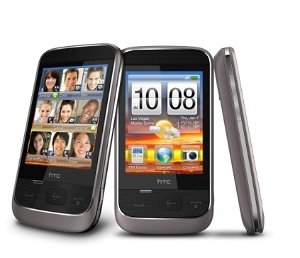 I realise that I am in the fortunate position of owning both an HTC HD2 and a Toshiba TG01, two super specc'd and very speedy Windows Mobile smart phones. More on the Tosh later, as I have now upgraded to 6.5.x and it is working beautifully as my portable media player, synchronizing beautifully with my Windows media centre.
I realise that I am in the fortunate position of owning both an HTC HD2 and a Toshiba TG01, two super specc'd and very speedy Windows Mobile smart phones. More on the Tosh later, as I have now upgraded to 6.5.x and it is working beautifully as my portable media player, synchronizing beautifully with my Windows media centre. Until last week, the HD2 was my actual phone, but, much as I like it, there are a few things which I would prefer to see in it. The first is a longer battery life - with Exchange and Twitter running you are lucky to get through 12 hours of use before a recharge. The second is that, much as I like Swype, the on-screen software inpout panels (SIPs) are much more effective on a resistive screen, and I prefer a harware keyboard anyway. The third is that the HD2, even though it is all screen, is still pretty massive.
I am also someone who is fortunate enough to have 2 SIM cards: one for voice and texts (with minimal data) and one for data alone. So, what was the best way to optimize my devices? Well, it would make sense for me to put the data SIM into the HD2 because with internet connection sharing and the marvellous WiFi router, it would be the easiest for using that connection. I also like that I can take it with me and have its serve independently as a mobile internet device (do people still use the term "MID"?).
The Tosh is still my home browsing device, so that meant I needed a new phone, preferably one with a hardware keyboard, WiFi, HSDPA and also pretty cheap. That's where the Samsung SGH-i600 came in. I manage to snag one on eBay for just under £40. It came announced as SIM-locked to O2, but O2 doesn't really lock their handsets so both the 3 and the Orange SIMs work in it. After doing the basic tests to make sure everything was operational I flashed it from Windows Mobile 5.0 to Windows Mobile 6.1. This is not a particularly difficult procress but definitely requires Windows XP (not Vista or 7) and involves a particular sequence of ROM flashes to allow the progression to higher versions of the OS. Now it has the lovely sliding panels interface and all.
Key programs I've loaded on board in no particular order:
- twikini
- total commander
- windows live
- marketplace
- bing
- google maps
- keep recordin'
- live mesh
- myphone
- opera mini 5 beta
- smart piano
- tcpmp
- tempoperfect
- weather watcher
- wm wifi router
Overall I am pretty pleased with the result. The phone serves mainly as a social networking hub and with push email, twitter (via twikini) and facebook all of my bases are covered. This being an older phone the internet connection is HSDPA version 1, but it is fast enough even for browsing using Opera mini.
One thing I will say is that the normal battery is definitely not enough. You will need to use the extended battery if you want to use any kind of connectivity. Thankfully the phone came with a jewel box shaped charger so you are never without an extra. One work of caution though, for reasons entirely incomprehensible to me, Samsung have cables which either charge your phone, or synchronize it, but not both. So you cannot charge the phone with the USB cable that comes with the phone and must use the included wall plug. For people like me who use a single wall wart USB adapter then plug the variety of USB cables in to allow charging of all the different electrical gizmos this is singularly annoying!
My other criticism is that the processor isn't all that quick (certainly conmpared to the two snapdragon devices), so if you are contemplating watching videos encoded in the native QVGA resolition, then you will ve disappointed. Instead, I reencode everything using Windows Media Encoder into the Pocket PC 220x176 profile. This keeps a decent framerate and image quality, with a small file size.
Overall, I'm pretty happy with this arrangeent; my conclusion is that nothing can beat a hardware keyboard at the end of the day!















